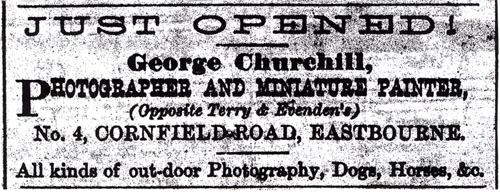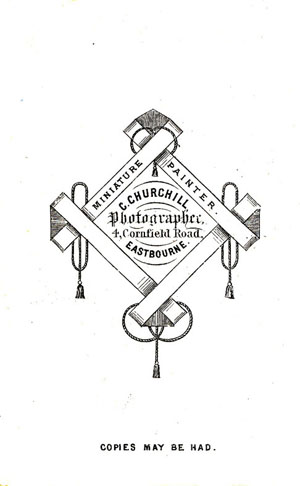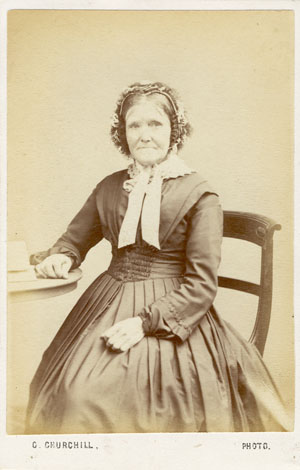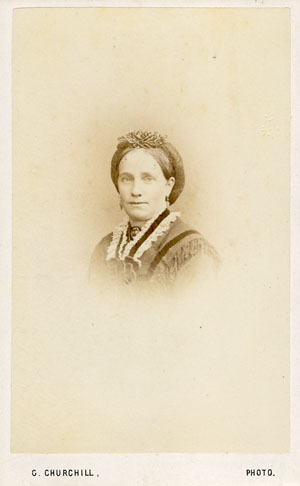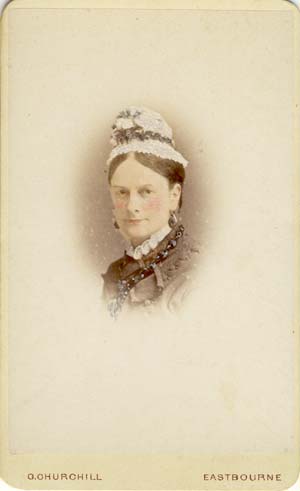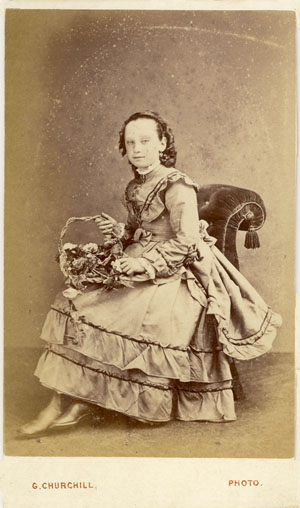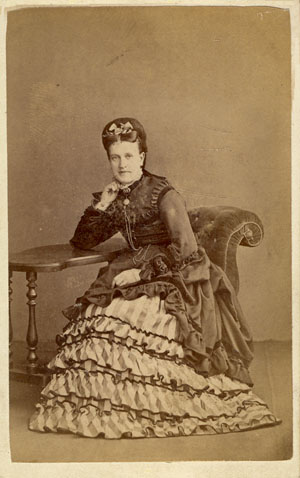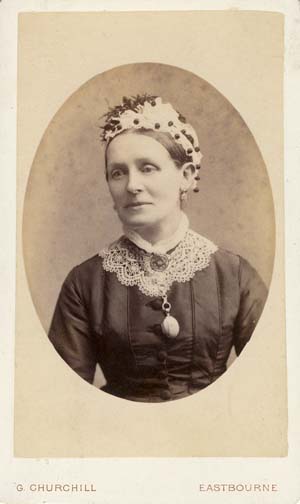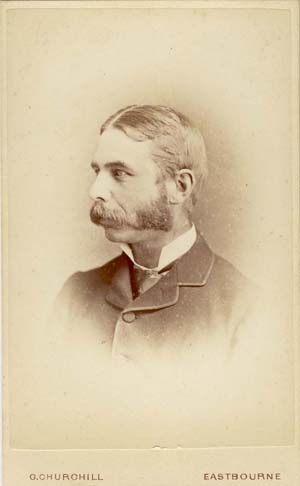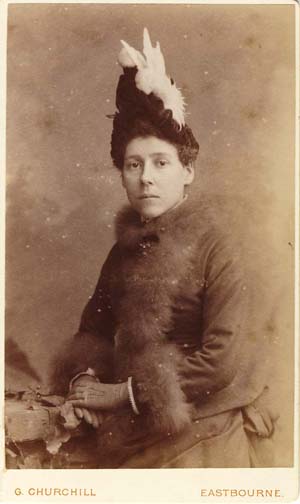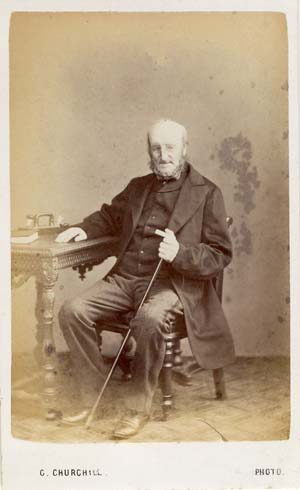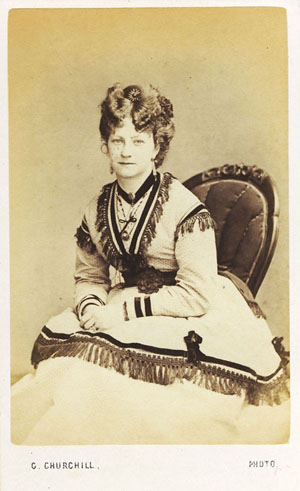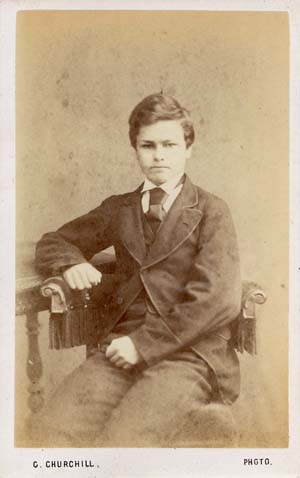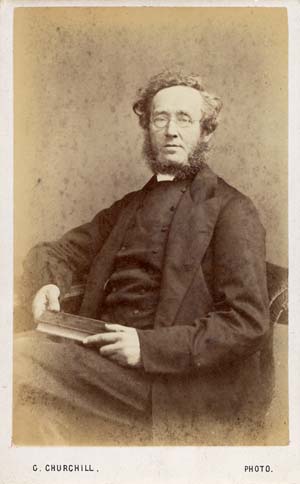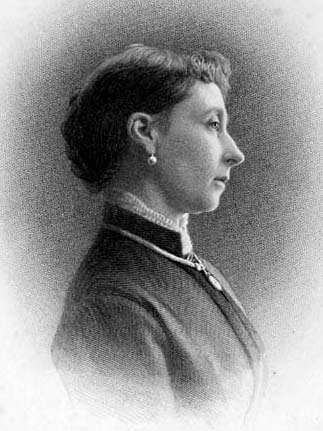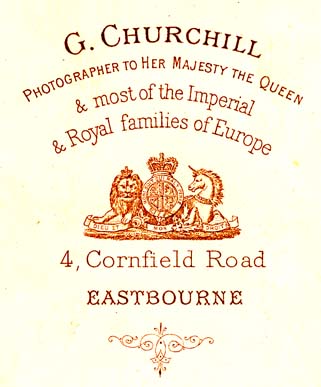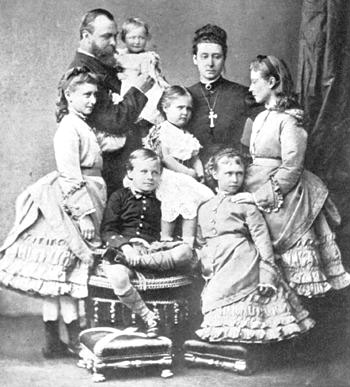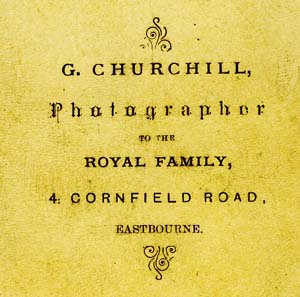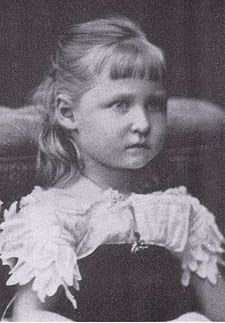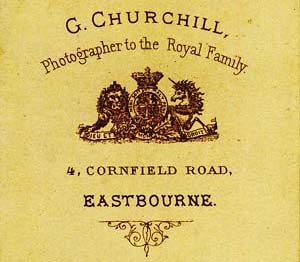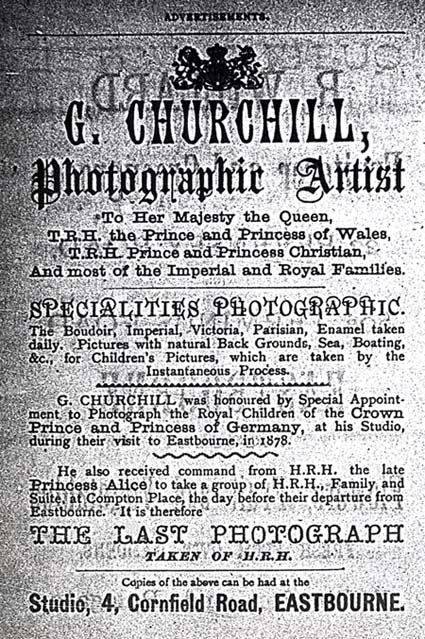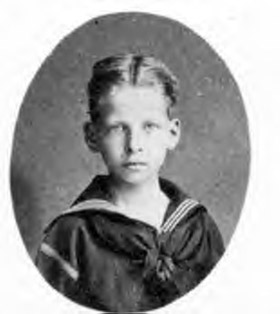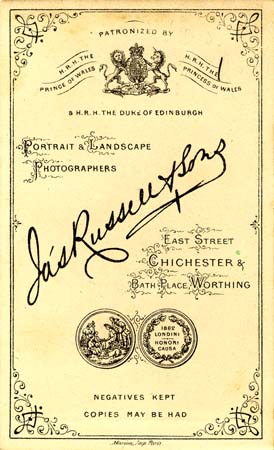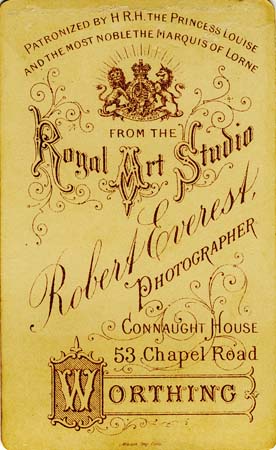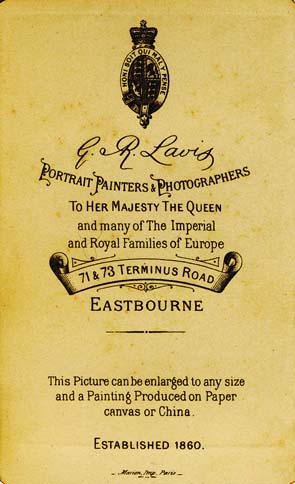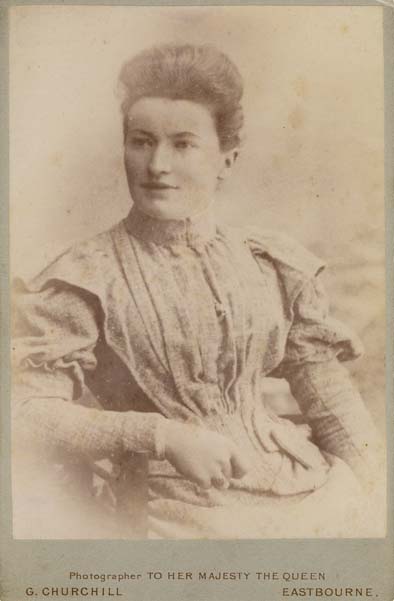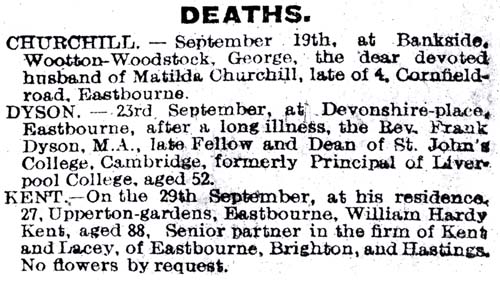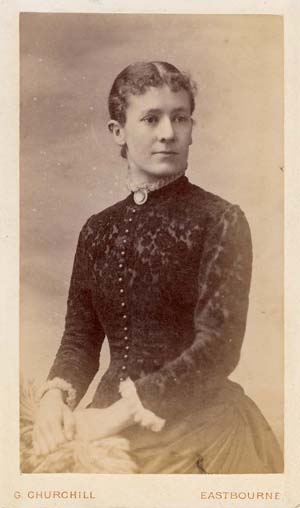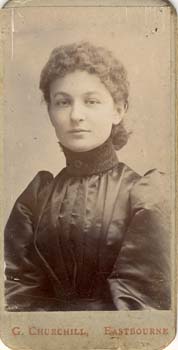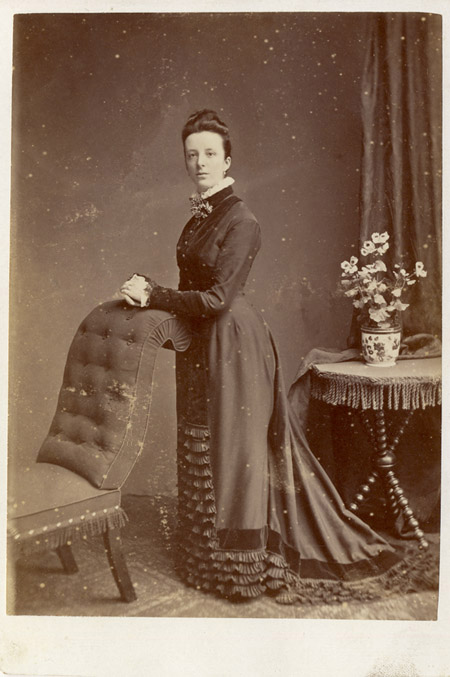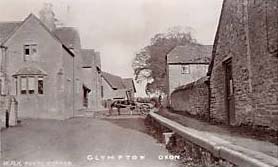 [ABOVE] A photograph the Oxfordshire village of Glympton, where George Churchill was born in 1837. |
Glympton is a small Oxfordshire village situated on the River Glyme
about 4 miles N.W. of Woodstock and the same distance from Blenheim Park
and Blenheim Palace, the country seat of the Duke of Marlborough and the
Spencer-Churchill family.
Glympton is in an agricultural area and in the 19th century many of its inhabitants were employed in the surrounding farms. However, glove-making had been an important domestic industry in the region since the 13th century and George's mother and her sisters made their living by making leather gloves. As a teenager George Churchill worked as an agricultural labourer. |
The small Oxfordshire village of Glympton is located about 4 miles N.W. of Woodstock and in 1841 it had a population of just "119 souls". When the census was taken in Glympton on 7th June 1841, four year old George Churchill is listed with Maria Churchill, a young unmarried woman. Maria Churchill would have been twenty-four years of age at the time of the census, but, under the requirements of the 1841 census, the enumerator has rounded her age down to the nearest five year band and so her age is written down as "20". The 1841 census did not give details of family relationships and so it is not clear from the census return whether the young woman was George's mother or his young aunt. Living alongside Maria Churchill and young George was Mrs Elizabeth Wiggins, another Churchill sister. Elizabeth Churchill (born 1815, Glympton) had married Thomas Wiggins in 1836.
In November 1843, Maria Churchill gave birth to an illegitimate child named Frederick Churchill. Twenty months later, on 3rd July 1845, Maria Churchill married Frederick's father, Mark Shaylor (Shayler), then employed as a gamekeeper in nearby Kiddington. After Maria's marriage, her son Frederick adopted his father's surname and was known as Frederick Shaylor. By the time the 1851 census was taken, Maria had given birth to four more children, including a daughter named Eleanor Jane Shaylor (born 1849, Kiddington). In adult life, Eleanor Shaylor lived with George Churchill and assisted him in his photography business. On the 1881 and 1891 census returns, Eleanor Shaylor is entered as George Churchill's sister and on the 1901 census form, Eleanor is described as George Churchill's "half sister", which suggests that they shared a mother - Maria Churchill (later Mrs Maria Shaylor).
After Maria Churchill marrried Mark Shaylor aka Shayler (born c1816, Leafield, Oxon.), she settled in the nearby village of Kiddington, where her husband worked as a gamekeeper. George Churchill remained in Glympton and by the time the 1851 census was taken, he was living next door to Glympton's Swan Inn with his aunt and uncle, James and Mary Smith. Maria's younger sister, Mary Churchill (born 1818, Glympton) had married James Smith (c1816, Glympton), a gardener, in 1839. At the time of the 1851 census, fourteen year old George Churchill was working as an agricultural labourer.
George Churchill leaves Oxfordshire
As a young man, George Churchill entered domestic service and left his home village of Glympton. By the time the 1861 census was taken, George Churchill, then aged twenty-four, was working as a Footman in Brighton, Sussex, at 1 Pavilion Parade, the home of solicitor George Philcox Hill (born 1803,Lewes). Lodging a short distance away in Brighton's Edward Street, was a twenty year old dressmaker named Matilda Skeggs (born 1840, Chigwell, Essex). Matilda, who had been baptised in Chigwell, Essex, on 8th November 1840, was the daughter of William and Maria Skeggs. A relationship developed between the young footman and Matilda and in 1865 the couple were married.
The wedding of George Churchill and Matilda Skeggs took place in the Devonshire seaside resort of Tormoham (Torquay) on 17th June 1865. At the time of their marriage, George was 28 and Matilda was 24. No surviving children are recorded from this union, but the marriage was to last for 42 years.
Five years after his marriage to Matilda, George Churchill established a photographic portrait studio in the Sussex seaside town of Eastbourne. Presumably, George Churchill worked as a photographer between 1865 and 1870, possibly working as an assistant in a photographic studio or as an itinerant photographer, travelling with his camera from one seaside town to another.
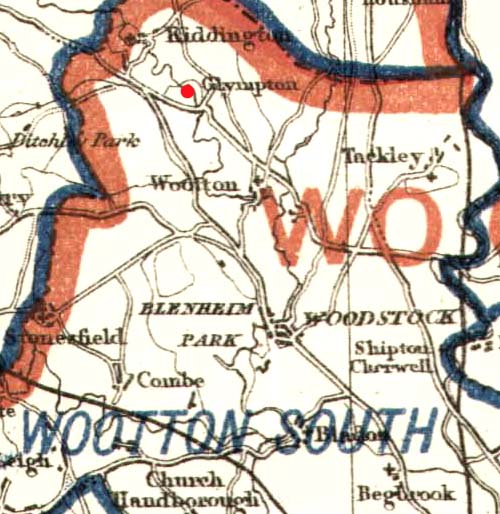
[ABOVE] Part of a 19th century map of Oxfordshire showing the location of George Churchill's home village of Glympton ( marked with a red dot ), four miles north-west of Woodstock. It appears that George's mother and half siblings settled in nearby Kiddington, but George Churchill remained in Glympton where he found work as an agricultural labourer. When George Churchill retired from his photography business around 1899, he made his home in Wootton, a village south-east of Glympton. The fact that the great mansion at Blenheim Park was built for John Churchill, 1st Duke of Marlborough, has led to speculation that George Churchill was related to the historically famous Churchill family, but their is no foundation to this theory. John Churchill, 1st Duke of Marlborough, originated from Devon. Churchill is also the name of an Oxfordshire village and Churchill is a common surname in Oxfordshire.
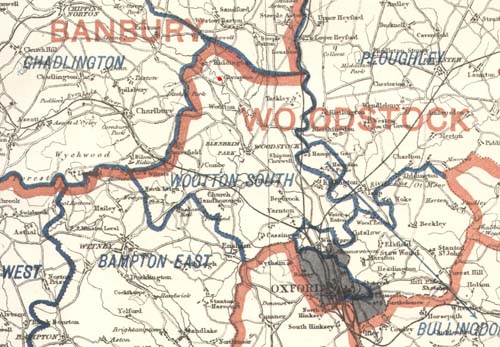
[ABOVE] A Victorian map showing proposed parliamentary boundaries in Oxfordshire. George Churchill's home village of Glympton ( marked with a red dot ) was in the district of Wootton South, north-west of the City of Oxford ( shaded grey ).
